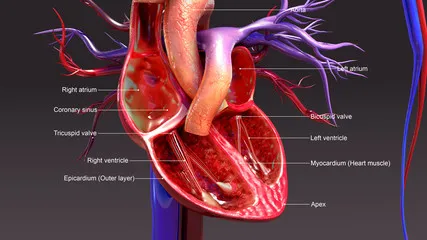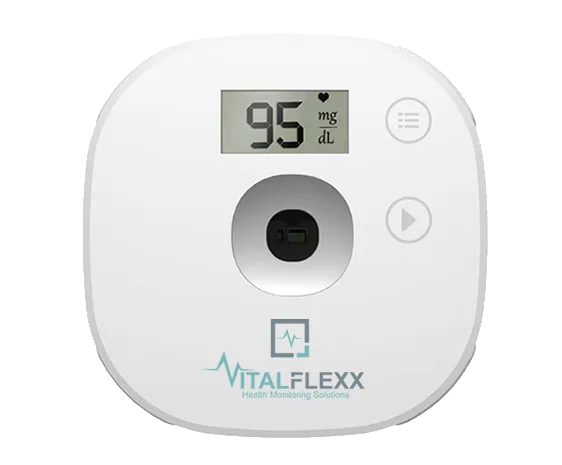Join Our Blog!
Sign up below to get the latest from our Blog and Newsfeed!

What Can Your Heart Rate Indicate About Your Health?
What Can Your Heart Rate Indicate About Your Health?
Our heart is amongst the most important organs of the body. The health of this organ determines whether an individual gets to live or they will die. A healthy heart rate depends on several factors, one of which is the heart rate. Therefore, the heart rate is amongst the most crucial tools that doctors use to determine the overall body health of an individual. This article explores the types of heart rates, how they may be measured, and the variations the heart rate can bring to an individual's overall health.
What Is The Heart Rate?
Heart rate is defined as the number of times the human heart beats per minute. However, the heartbeat does not stay constant the entire time. The body may adjust the heartbeat depending on the activity the individual may be indulging in and how they may be feeling at that moment. For example, the heartbeat of a person lying on their bed may not be the same as someone undergoing extensive exercise or running outside. The heartbeat gets fast when we are active, surprised, scared, or excited, while it may be lower in individuals who are in a resting state. The latter is also known as resting heart rate.
What Is The Resting Heart Rate And What Does It Say About Your Health?
The resting heart rate of an individual who is considered healthy is often between 60 and 100 beats per minute. However, a heart rate above and below that may be considered unhealthy. For example, individuals who have a resting heart rate below 60 beats per minute are often more physically active and are considered to be in good health. (1)
On the other hand, a heart rate above 100 in its resting state may indicate an unhealthy state of the body. This may include excessive exposure to caffeine, stress, and a heart condition. This may also be associated with an active infection or an arrhythmia of the heart. This is why individuals with an increased resting heart rate are at a greater risk for early death. (2)
What Heart Rate Should I Expect To Have?
There are a number of factors that the resting heart rate may be dependent on. These include:
· Changes in the resting or active state of the individuals
· The weight of the individual
· Specific prescription medications affecting the heart
· Emotional state of the individual
However, changes in the heart rate may not only be associated with the factors mentioned above. Individuals belonging to different ages may also have different heart rates. (3)
For example, newborns who are under one month of age commonly have a heart rate of between 100 to 200 beats per minute. Babies between the ages of 1 month and 12 months may have a comparatively lower heart rate of 100 to 180 beats per minute. Toddlers between the ages of 1 and three years commonly have a heart rate between 98 and 140 beats per minute. Children between the ages of 3 and 5 years have a normal heart rate of between 8 and 120 beats per minute, while those between 5 and 12 years have a heart rate of 75 to 120 beats per minute. The resting heart rate is even lower for adults between the ages of 13 and 18 years and is found to be between 60 and 100 beats per minute.
Can You Measure Your Resting Heart Rate?
Measuring the resting heart rate, whether at a doctor's office or by yourself at home, is considered one of the most important parameters in determining health status. As mentioned previously, any unexpected changes in the heart rate at a resting state may indicate something happening inside the body. In order to measure the heart rate in its resting state, it is important to not measure it within one hour of strenuous activity or being under any form of stress. According to the American Heart Association, the best time to measure heart rate is when the individual has just gotten out of bed in the morning.
Several tools may be used to measure heart rate, one of which is the VitalFlexx 6-in-one health monitor. It is not only approved by numerous health certifications all over the world but it is also proven to be effective and efficient in different clinical trials. Another way the heart rate may be measured by the health professional in the comfort of a patient's house is the VitalFlexx Digital Stethoscope. This device allows the health professional or doctor to check the heart rate and rhythm and evaluate whether there have been changes over time by evaluating the noise.
Other ways include placing the index and middle finger on the wrist. However, it is not placed on the wrist's center but on the thumb side. This is because the pulse is most clearly felt at that point. Once the pulse is found, a timer can be set for 30 seconds; during those 30 seconds, the number of beats the heart beats should be counted. The number you get can then be multiplied by 2 to find out the number of times the heart beats in a minute. However, locating the pulse may be challenging for everyone, and most prefer to use devices like the VitalFlexx 6-in-one health monitor.
Can The Resting Heart Rate Be Improved?
When the resting heart is abnormal or changes drastically over time, it may be indicative of an underlying problem. However, in order to improve the heart rate, it is important to first evaluate what may be causing the change and treat the problem. Some common ways, which are often recommended for a healthy resting heart rate, include regular exercise, quitting smoking, and limiting the use of alcohol. (4)
References:
1. Avram, R., Tison, G. H., Aschbacher, K., Kuhar, P., Vittinghoff, E., Butzner, M., Runge, R., Wu, N., Pletcher, M. J., Marcus, G. M., & Olgin, J. (2019). Real-world heart rate norms in the Health eHeart study. NPJ digital medicine, 2, 58. https://doi.org/10.1038/s41746-019-0134-9
2. Arnold, J. M., Fitchett, D. H., Howlett, J. G., Lonn, E. M., & Tardif, J. C. (2008). Resting heart rate: a modifiable prognostic indicator of cardiovascular risk and outcomes? The Canadian journal of cardiology, 24 Suppl A(Suppl A), 3A–8A. https://doi.org/10.1016/s0828-282x(08)71019-5
3. Santos, M. A., Sousa, A. C., Reis, F. P., Santos, T. R., Lima, S. O., & Barreto-Filho, J. A. (2013). Does the aging process significantly modify the Mean Heart Rate?. Arquivos brasileiros de cardiologia, 101(5), 388–398. https://doi.org/10.5935/abc.20130188
4. Reimers, A. K., Knapp, G., & Reimers, C. D. (2018). Effects of Exercise on the Resting Heart Rate: A Systematic Review and Meta-Analysis of Interventional Studies. Journal of clinical medicine, 7(12), 503. https://doi.org/10.3390/jcm7120503

